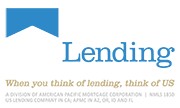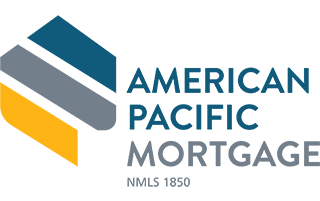Reverse Mortgage Line Of Credit Explained
 People have heard of a reverse mortgage as a tool that older homeowners can use to add to their cash flow and finances using the equity in their home. However, the reverse mortgage line of credit, similar to a home equity line of credit is a somewhat different tool, also available and useful for eligible borrowers. And, even more interesting, it allows a borrower the same advantages of a credit card without the full cost of borrowing a lump sum all at once, which means less borrowing costs. Here’s how it works.
People have heard of a reverse mortgage as a tool that older homeowners can use to add to their cash flow and finances using the equity in their home. However, the reverse mortgage line of credit, similar to a home equity line of credit is a somewhat different tool, also available and useful for eligible borrowers. And, even more interesting, it allows a borrower the same advantages of a credit card without the full cost of borrowing a lump sum all at once, which means less borrowing costs. Here’s how it works.
Overview Of What A Reverse Mortgage Is
For those who have a significant portion of equity or own their home completely, they can use a reverse mortgage tool to be given the cash value of that equity using the home as collateral. The funds can be used for regular cash flow, a big home renovation, a world wide trip, or other big expenses. The funds are entirely at the discretion of the homeowner and guaranteed by the home. However, unlike a regular loan, the homeowner remains in the home and keeps title as long as the reverse mortgage is paid in full at the end of the loan. Alternatively, the homeowner could, upon leaving the home, or passing, use the home to satisfy the loan amount due at the end of the loan life.
What Is A Line of Credit?
A line of credit is a revolving fund account that can be borrowed, paid back, and borrowed again without having to go through a loan application every time. It works more similar to a credit card than a fixed traditional loan. Even better, while a borrower is authorized for a large amount, he or she only pays interest on the amount actually borrowed, which could be much less. This avoids the cost of a full loan while enjoying the power to borrow a large amount if needed or desired.
What’s A Reverse Mortgage Line of Credit?
The reverse mortgage line of credit combines the benefits of using a home equity to augment one’s cash flow or life with the benefit of a line of credit where the person only uses what is needed at the moment, avoiding the cost of a full loan amount.
The Key Features of a Reverse Mortgage Line of Credit
Again, the main benefit with this tool is the fact that one can borrow as much or as little as needed within the total loan amount approved. And that works very well when a borrower has a phased project in mind or just wants to borrow a bit at a time and pay the requisite financing cost on just the amount used.
How Much Can I Borrow?
Because a borrower is essentially using his or her home equity as the basis for the loan, the amount is capped on how much equity is cashed out. So a borrower can pursue a line of credit loan for 10 percent of equity or 90 percent. The total amount available for borrowing is how much home equity is owned and then switched to a cash out model under the reverse mortgage mechanism.
Are There Any Requirements?
There are specific requirements on a reverse mortgage line of credit that are the same as any kind of reverse financing. First, the borrower needs to be at least age 62 or older. And that same age requirement applies to all parties in the loan and on the title of the home. So the youngest person involved is the primary factor to check.
Second, there cannot be other financing against the home already. So where there is a mortgage or loan attached, the reverse mortgage would pay that off and assume that loan into the reverse line of credit borrowed amount to make sure the reverse financing is the only loan on the home.
How Does the Interest Work?
Interestingly, the value of the unborrowed portion of a line of credit can grow in value over time. This happens because the value of the home generally tends to increase. So what is not borrowed can actually become bigger, providing a person more borrowing power until actually used and committed.
Are There any Benefits?
Just like a regular reverse mortgage, a reverse mortgage line of credit does not have monthly payments due. It does not come due until a person passes away or moves out of the house. That said, a borrower can pay it back earlier and borrow again, somewhat like the revolving fund line of credit benefit. That would not be possible with a traditional reverse mortgage as once it’s paid, the loan is completed and not reissued again.
What are the Risks?
The risk is, of course, that the life of the loan is reached and then the outstanding amount is due. To the extent that the borrower cannot pay the loan back in funds, then he or she must consider selling the home to satisfy the amount due. In many cases, however, the loan period exceeds the borrower’s natural life and is then satisfied by the liquidation of the home as part of the estate.
What if I Haven’t Paid Off My Home Yet?
In a nutshell, no, a borrower does not need to activate and borrow the full amount provided in the line of credit. He or she can borrow a portion and leave the remainder available. There is no requirement to borrow the full authorized amount.
Do I Have To Take Out A Line Of Credit?
Short answer is no. People often decide based on their own needs and wants, as well as the rules governing their reverse mortgage.
Popular Reasons Why People Take out a Reverse Mortgage Line of Credit
A line of credit approach is extremely popular when a borrower wants to finance something but the full amount is not known or needs to be paid in phases over time. Instead of paying for the loan up front, a phased approach lessens the cost of borrowing with less charged in interest on smaller amounts.
The revolving fund benefit also works where a borrower anticipates a financing need in the near future but is not sure when it will occur. Instead of a full loan taken out at once, the borrower can decide to write a check or pull out funds when the future event arrives. Again, money is saved by avoiding unnecessary borrowing.
Some find the line of credit to be a safety net, there when a need arises as a safety tool but not utilized if not necessary. This peace of mind is a big advantage for folks and reduces their stress knowing they have another emergency tool to work with instead of an expensive credit card.
Can I Wait to Establish the Reverse Mortgage Line of Credit?
It’s always possible to wait longer than just age 62. There is no requirement one must take out this financing tool just as soon as the person turns the minimum age required. However, loan amounts could be reduced for shorter expected loan life periods for folks much older. It really depends on what a given lender is willing to finance and the home involved.
Final Thoughts
The reverse mortgage line of credit is not a perfect tool for everyone. Folks considering this borrowing option should talk with an independent financial advisor to make sure the tool fits their specific need and makes sense. Getting a second opinion doesn’t hurt and can open up a better understanding of how this tool can help one’s financial situation in retirement or similar life events.
*Reverse mortgages are loans offered to homeowners who are 62 or older who have equity in their homes. The loan programs allow borrowers to defer payment on the loans until they pass away, sell the home, or move out. Homeowners, however, remain responsible for the payment of taxes, insurance, maintenance, and other items. Nonpayment of these items can lead to a default under the loan terms and ultimate loss of the home. FHA insured reverse mortgages have an up front and ongoing cost; ask your loan officer for details. These materials are not from, nor approved by HUD, FHA, or any governing agency.
The views, articles, postings, and other information listed on this website are personal and do not necessarily represent the opinion or the position of American Pacific Mortgage Corporation or US Lending Company.
* For loan examples and more information visit our disclosure page at https://www.uslendingcompany.com/disclosures/





